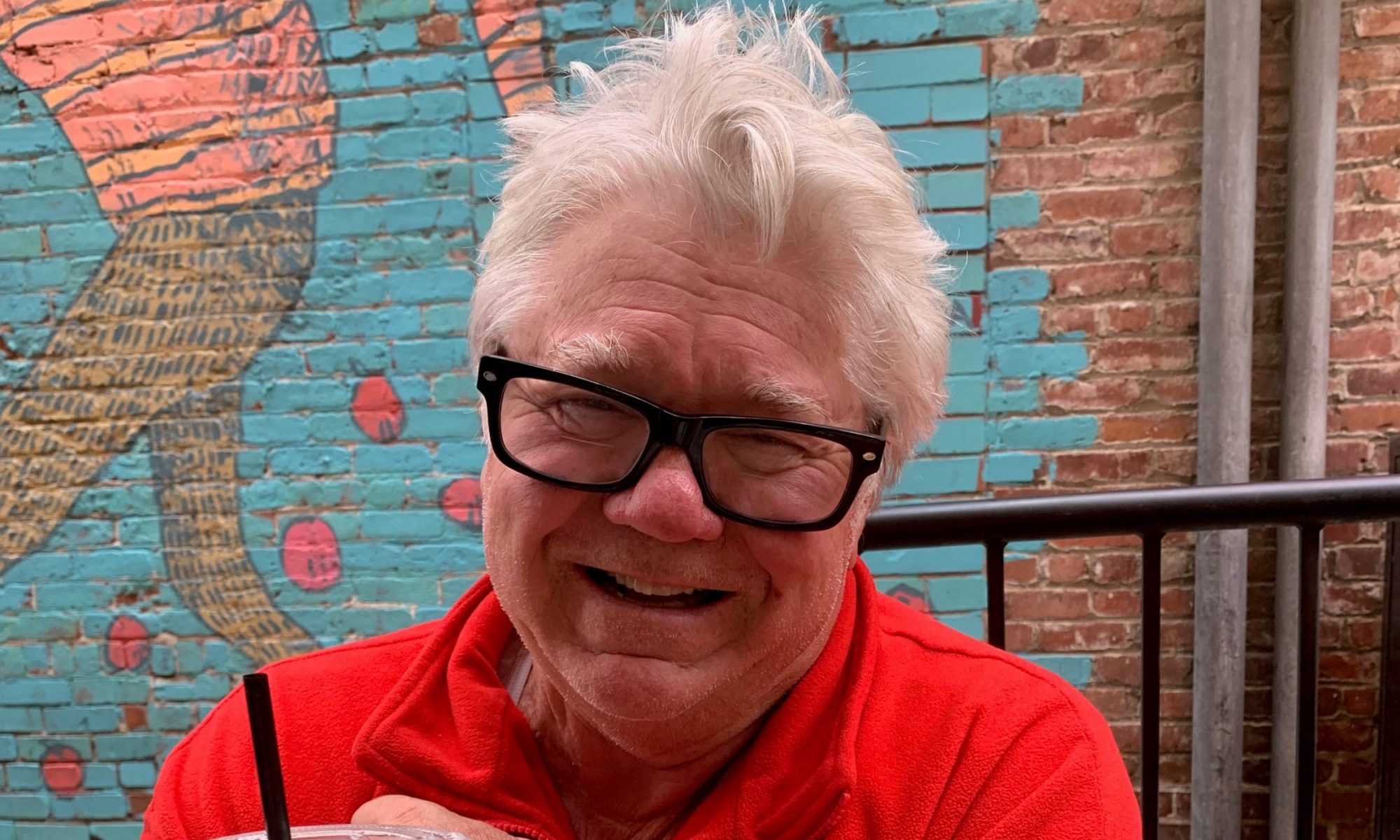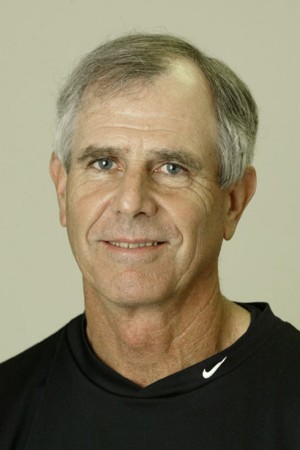A Redlands Connection is a concoction of sports memories emanating from a city that once numbered less than 20,000 people. From pro football’s Super Bowl to Major League Baseball, from dynamic soccer’s World Cup to golf and tennis’ U.S. Open, major auto racing, plus NCAA Final Four connections, Tour de France cycling, more top-flight tennis like Wimbledon, tiny connections to that NBA and a little NHL, major college football, Kentucky Derby, aquatics and Olympic Games, that sparkling little city sits around halfway between Los Angeles and Palm Springs on Interstate 10. In this story, perhaps Redlands is getting its biggest headline off this brilliant basketball connection. – Obrey Brown.
That high-level basketball connected man, out of Redlands no less, could be related to NBA Hall of Famer John Stockton, coaching up against John Wooden and Adolph Rupp, or Dean Smith and Forrest “Phog” Allen, those two McGuires, lifting Tex Winter, maybe even participating on a U.S. Olympic basketball team.
Amazing, isn’t it?
If you want to talk Redlands basketball, maybe “Black” Jack Gardner – a 1928 Redlands High alum – might be about as good for a story, or two, or three, or more than anyone from that tiny city. Also known as “The Fox,” Gardner’s departure from Redlands led him on a sensational journey in which he would eventually wind up in 11 different Halls of Fame.
Whoops! Make that a mere 10. Truth is, he’s not in his own high school’s Hall of Fame, for whatever reason. A 1910 New Mexico birth, his path eventually began at tiny Redlands High, where he was a four-sport Terrier athlete.
Any future Redlands athletic products may not have ever reached that highest level Gardner managed. One could well be football’s Brian Billick, head coach for that 2002 Super Bowl champion Baltimore Ravens, also kicked off from Redlands High.
Billick or Gardner? Take your pick.

In 1998, Gardner spoke by telephone with me from Salt Lake City, his living residence. Told me he was 87. That he never forgot Redlands. No, he said, there was no one from that city “still connected with me. You’ll be my best guy from that city,” he cracked.
Revelations from our conversation, plus another couple contacts, were eye-opening. Credited with discovering another Hall of Famer, Stockton, Gardner watched plenty of hoops, even in retirement. In fact, he showed up at every Final Four between 1939 and 1997.
“This,” he said as 1998 March Madness just started, “is my first year … not going … in San Antonio this year … I’m just not up to it. My mind, yes.”
My connection with “Black” Jack? Came from a former UofU player, Mike Newlin, a top NBA player during the 1970s, along with Jim, who is Jack’s son. Malibu, Jim told me, “held our winter home.”
It’s a man with quite a resume. Even these days, after remarkable coaching successes from Wooden, Bobby Knight, Dean Smith, Mike Krzyzewski, Larry Brown, Jim Boeheim, Roy Williams, Rick Pitino, Rupp and Jerry Tarkanian, Gardner qualifies among collegiate basketball’s most elite coaches.
To date, he remains one of three coaches – Pitino and Williams are those others – who have twice led two different college programs to that Final Four.
Long before Kansas became a major force in collegiate basketball, especially under legendary coach Forrest “Phog” Allen, Gardner’s Kansas State regularly outplayed those Jayhawks.
“Yes,” said Gardner during our 1998 telephone chat. “Coach Allen didn’t recruit much in those years. I think I got better players because I went after players. I recruited. When (Allen) got going, boy, things got better for them.”

Statue of Forrest “Phog” Allen, a legendary Kansas basketball coach, went up against Redlands product Jack Gardner, who coached Kansas State to some prominent times in the 1940s and 50s. (Photo by Wikipedia Commons).
One name: Chamberlain! To Kansas. Yes, Gardner tried to get him. More on Wilt later.
As for Gardner, off he went to USC after his Redlands days, that 5-foot-11, 160-pounder becoming an All-American during his 1928-1932 stint as a Trojan. It was, of course, long before basketball became one of America’s iconic sports.
Gardner was All-Coast, USC’s high scorer for two seasons, Trojans’ team captain and MVP during a successful collegiate playing career. His hoops future wasn’t in a uniform. It was in a suit.
COACHING CAREER TOOK
OFF AT HIGH SCHOOL LEVEL
Alhambra High School, which went 29-11 over two seasons, was Gardner’s first coaching point – a 1934 Southern Section runner-up spot, losing to Santa Barbara, 19-14, at Whittier College. That ex-Terrier took off from there.
Next? Off to Modesto Junior College, posting three California state titles over four seasons. By 1939, he became Kansas State’s coach.
There were two stints at K-State – first from 1939-42, then after World War II, from 1946-53. After posting a miserable 20 combined wins in his first three seasons, Gardner returned to Manhattan, Kansas in 1947 and led K-State to its first winning season in 16 years with a 14-10 mark.
One season later, those Wildcats made most of their first NCAA Tournament appearance, hitting that Final Four in 1948. Runner-up Baylor University beat K-State, 60-52, in that year’s Western Regional Finals.
It was K-State’s first time to notch 20 wins en route to capturing a Big Seven crown. K-State tied for another Big Seven title in 1949-1950, a three-way deadlock with Kansas and Nebraska, each 8-4. By 1950-51, All-American Ernie Barrett led Gardner’s team to 25-4. There was more.
Gardner guided his ’Cats to arguably their greatest season, notching their third Big Seven title over four seasons.
Ranked fourth that season, K-State survived a scare from No. 12 Arizona, winning 61-59, then beat No. 11 Brigham Young University, blasting No. 2 Oklahoma State by 24 points.
It wound up K-State against Rupp’s No. 1-ranked Kentucky.
What a spot for a guy that had graduated from Redlands 23 years earlier. Could anyone during Gardner’s playing days in that old Terrier Gymnasium have predicted anything like this?
It was all Wildcats in that championship – No. 1-ranked Kentucky taking on Gardner’s K-State Wildcats. K-State led at halftime, 29-27.
Barrett, though, was “hurt, injured” and K-State got overwhelmed in that second half, losing 68-58. What a story that would eventually turn out, though. History revealed point shaving. Kentucky players were branded. Arrested. Jailed. Barred for life.
Kentucky’s involvement in that point-shaving mess was later uncovered when No. 1-ranked Wildcats arrived in Minneapolis in search of their third NCAA championship over four seasons. Gardner’s No. 4-ranked Kansas State, Big Seven’s champions, awaited.
Led by 7-foot junior All-America Bill Spivey and sophomore Cliff Hagan, those Cats beat Gardner’s K-Staters by 10. Kentucky’s celebration didn’t last long. Shortly after winning that title, a point-shaving scandal broke in New York.
Five of Kentucky’s players, including Alex Groza, Ralph Beard and Spivey were implicated. Groza and Beard, stars of USA’s 1948 Olympic basketball team and eventual professionals, were thrown out of NBA. Spivey fought those charges, but never played another game in college or pros.
Gardner told me that he, “bit his tongue” in suffering such a setback. There was, he said, “nothing I could do.” Fifteen seasons later, in 1966, was Gardner’s final burst into that NCAA Tournament. It would be a memorable achievement.
All four of “Black” Jack Gardner’s trips to NCAA’s Final Four came without a national championship – 1948 and 1951 coaching at Kansas State, then 1961 and 1966 at his next stop, University of Utah. Three times his squads lost in semifinals. It was in 1951 that his team came closest.
Part 2 coming.

















